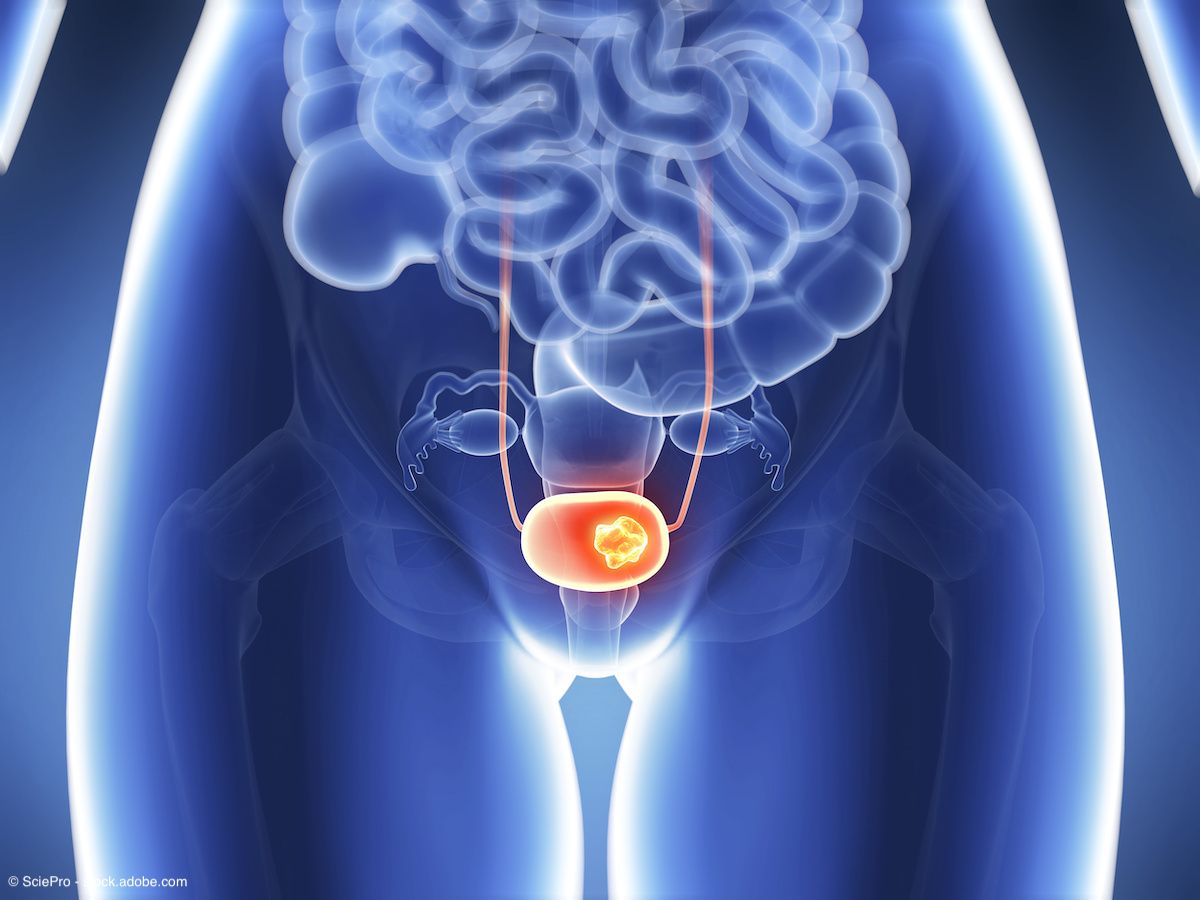News
Article
APL-1202 plus tislelizumab combo shows promise in MIBC
Author(s):
Overall, the pathological complete response rate among patients who received APL-1202 plus tislelizumab was 39%, compared with 21% among those who received tislelizumab alone.
The combination of oral MetAP2 inhibitor APL-1202 (nitroxoline) and tislelizumab demonstrated promising pathological complete response rates vs tislelizumab alone as neoadjuvant therapy in patients with muscle-invasive bladder cancer (MIBC), according to interim data from the phase 2 ANTICIPATE trial (NCT04813107).1,2
"Both groups exceeded the thresholds to expand to stage 2 of this 2-stage design," says Matthew D. Galsky, MD, FASCO.

The findings were presented by Matthew D. Galsky, MD, FASCO, professor of medicine (hematology and medical oncology), director of genitourinary medical oncology, co-director of the Center of Excellence for Bladder Cancer at The Tisch Cancer Institute, and associate Director for translational research at The Tisch Cancer Institute at the Icahn School of Medicine at Mount Sinai, New York, New York, during a session at the 2024 American Society of Clinical Oncology Genitourinary Cancers Symposium in San Francisco, California.
Overall, the pathological complete response rate (pT0N0) among patients who received APL-1202 plus tislelizumab was 39% (7/18), compared with 21% (3/14) among those who received tislelizumab alone. Both rates exceeded the threshold to initiate expansion of the study to stage 2 of the 2-stage design.
Further, the pathological downstaging rate (<pT2N0) among patients in the combination arm was 44% (8/18), vs 21% (3/14) in the tislelizumab arm. A pathologic response rate in patients with T3N0M0 was achieved in 33% (2/6) patients in the combination arm, whereas no patients who received tislelizumab alone achieved a pathological complete response.
Regarding safety, treatment-emergent adverse events (TEAEs) were reported in 94.4% (17/18) of patients in the combination arm and 78.6% (11/14) of patients who received tislelizumab alone. The most common TEAEs of grade 3 or greater in the combination arm were anemia, experienced in 22.2% of patients, and lymphocyte count decreased, experienced in 16.7% of patients. Among the patients who received tislelizumab alone, the most common TEAE of grade 3 or greater was intestinal obstruction, experienced in 21.4% of patients.
Drug discontinuation due to AEs occurred in 3 patients in the combination arm, attributed to acute kidney injury, anemia, and hepatic function abnormal. Among those who received tislelizumab alone, 2 patients discontinued treatment due to AEs of immune hyperthyroidism and COVID-19. One patient included in the study died due to a septic event, though Galsky noted in his presentation that the investigators did not believe it to be related to study treatment.
In total, the prospective, multicenter, randomized ANTICIPATE study included 42 patients with MIBC, with 32 having evaluable data for analysis. Patients included in the study were randomly assigned to receive APL-1202 plus tislelizumab or tislelizumab alone. The randomization was stratified by PD-L1 expression, which was assessed using the VENTANA PD-L1 Assay.
Those included in the study received neoadjuvant treatment every 3 weeks for 3 cycles. The recommended phase 2 dose of APL-1202 based on results from the dose-escalation portion of the study was 1125 mg, the highest dose assessed in phase 1.
Radical cystectomy was completed in 18/18 patients in the combination arm and 13/14 patients in the control arm. One patient in the control arm could not undergo surgery due to disease progression. The study’s primary end point was pathological complete response rate.
Gatsky concluded in the presentation, “Both groups exceeded the thresholds to expand to stage 2 of this 2-stage design. The study has now completed accrual, and we'll look forward to analyzing the final results in the future.”
References
1. Oral APL-1202 in combination with tislelizumab as neoadjuvant therapy in patients with muscle-invasive bladder cancer (MIBC): Interim analysis of ANTICIPATE phase II trial. Presented at the 2024 ASCO Genitourinary Cancers Symposium. January 25-27, 2024. San Francisco, California. Abstract 632
2. Asieris will present for the first time interim analysis data of oral APL-1202 in combination with PD-1 inhibitor tislelizumab for neoadjuvant treatment of muscle-invasive bladder cancer at 2024 ASCO-GU. News release. Asieris Pharmaceuticals. January 25, 2024. Accessed January 29, 2024. https://www.prnewswire.com/news-releases/asieris-will-present-for-the-first-time-interim-analysis-data-of-oral-apl-1202-in-combination-with-pd-1-inhibitor-tislelizumab-for-neoadjuvant-treatment-of-muscle-invasive-bladder-cancer-at-2024-asco-gu-302044439.html

















